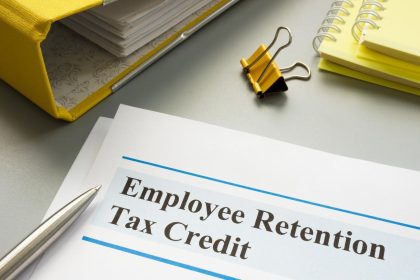If you were hoping for some guidance from the IRS with respect to changing your withholding to reflect the changes under the One Big Beautiful Bill Act (OBBBA), you’re out of luck.
The IRS has announced that, as part of its phased implementation of the new tax law, there will be no changes to withholding tables for 2025. The IRS added that there will be no changes to certain information returns, including Form W-2, Forms 1099, Form 941 and other payroll return forms for 2025. Employers and payroll providers should continue using current procedures for reporting and withholding.
According to the IRS, these moves are “intended to avoid disruptions during the tax filing season and to give the IRS, business and tax professionals enough time to implement the changes effectively.”
Exactly how the new law will be implemented without new withholding tables and information forms remains a bit of a mystery. According to the IRS, “[m]ore information will be shared in the coming months about how taxpayers can claim OBBBA-related tax benefits when they file their returns. The Treasury Department and the IRS are preparing additional guidance for both reporting entities and individual taxpayers.”
Here’s why that might prove challenging for some taxpayers.
No Tax On Tips
Under the new tax law, tip income is temporarily deductible for the tax years 2025 through 2028 and can be claimed whether or not you itemize your deductions. The new deduction is available to taxpayers who receive qualified tips (voluntary cash or charged tips) in occupations listed by the IRS as customarily and regularly receiving tips on or before December 31, 2024. As written, the law directs Treasury to provide a list of those occupations by October 2, 2025.
The maximum annual deduction is $25,000, and the deduction for self-employed taxpayers may not exceed your net income before the deduction from the trade or business in which the tips were earned. You must include your Social Security Number on the return and file jointly if married to claim the deduction. The deduction phases out with modified adjusted gross income (MAGI) over $150,000 for single filers and $300,000 for joint filers.
The deduction applies to employees and self-employed individuals, and qualified tips must be reported on Form W-2, Form 1099, or other specified statement furnished to the taxpayer or reported directly on Form 4137, Social Security and Medicare Tax On Unreported Tip Income.
Currently, there are lines for reporting tips on Form W-2—tips must be reported to qualify for the deduction.
The IRS has indicated that it provide transition relief for the tax year 2025 to taxpayers claiming the deduction, as well as to employers and payors subject to the new reporting requirements—this means more guidance is yet to come. That guidance will not include new withholding tables in 2025.
No Tax On Overtime
While it’s true that there are lines for reporting tips on Form W-2 for tips, the same is not true for overtime. That’s because, prior to OBBBA, there was no difference in the tax treatment for regular wages versus overtime pay.
Under the new law, workers who receive overtime will be eligible for a deduction for qualified overtime pay of $12,500 ($25,000 for married taxpayers filing jointly). As with tips, this is a deduction, not an exclusion. The deduction would apply to taxpayers regardless of whether they itemize and would also be temporary—only for tax years 2025 through 2028.
For purposes of the rule, overtime compensation is defined as the amount paid in excess of the employee’s regular rate—only the overtime compensation is part of the break. The IRS has confirmed that the deductible amount is the bit that exceeds your regular rate of pay—the “half” portion of “time-and-a-half” compensation.
The IRS had previously indicated that overtime pay must be reported on a Form W-2, Form 1099, or other specified statement furnished to the taxpayer. However, with no changes to Form W-2, it’s now unclear how that income will be reported for purposes of claiming the deduction.
New Deduction For Seniors
Under OBBBA, seniors who are age 65 and older are eligible to claim a new, temporary deduction of $6,000 beginning in 2025—the deduction would expire after 2028. The deduction would be available to taxpayers who itemize and those who claim the standard deduction. This is a stand-in for Trump’s “no tax on Social Security” promise—there is no separate provision.
The deduction is effective for 2025 through 2028 for taxpayers who are age 65 and older on or before the last day of the taxable year. The additional deduction of $6,000 and is in addition to the current additional standard deduction for seniors under existing law. It can be claimed regardless of whether you itemize your deductions.
The $6,000 senior deduction is per eligible individual (or $12,000 total for a married couple where both spouses qualify). You must include your Social Security Number on the return and file jointly if married to claim the deduction. The deduction phases out for taxpayers with modified adjusted gross income (MAGI) over $75,000 ($150,000 for joint filers).
Why The IRS News Is Surprising
Tax professionals expected the IRS to revise form W-2 to allow workers to claim a new break for overtime which lasts from 2025 through 2028 and create new withholding tables to adjust for the tax breaks for tips and overtime. That is not happening in 2025.
It’s true that these administrative changes would have coincided with preparations for the run-up to the next tax season, including reworking existing IRS software and tax forms. In fact, drafts of tax forms for the 2025 tax year, including Form 1040, are already available on the IRS website.
It’s also true that the IRS has been tasked in previous years with revising tax forms with little to no notice. Congress loves last-minute changes, from extenders to new tax provisions (the 2017 tax reform law was passed in December).
So, it’s surprising for the IRS to announce—with several months to go in the tax year—that they will not be making changes to the withholding tables or those information forms.
Should You Make Changes Anyway?
Since many of the changes under the new tax law—including those new deductions—are effective retroactive to January 1, 2025, taxpayers asked whether they should make changes to their withholding. Tax professionals (including me) had initially advised that taxpayers shouldn’t rush to make changes until the IRS issued additional guidance, including updated withholding tables. Now that we know that those changes won’t be happening—and we’re not sure when to expect guidance—taxpayers face some choices.
If you don’t want to make any changes, you can continue at your current withholding level. That’s the safest bet for most taxpayers. If your tax bill will be lower because of the new deductions, including those on tips and overtime, as well as those for seniors, and you didn’t make any withholding changes, you can likely expect a refund at tax time.
However, if you want to take advantage of the new deductions now, you can update your withholding so that less tax is taken out of each paycheck through the end of the year (you’ll do this by filling out a new Form W-4). However, figuring the amount of any change can be tricky. You’ll likely want to consult with a tax professional to make sure that you don’t accidentally underwithhold. If you withhold too little, you could end up with a tax bill—potentially subject to an underpayment penalty—at tax time.
If you do make a change, be prepared to exercise a little patience. A change to your Form W-4 isn’t immediate—once you submit a new Form W-4 to your employer, your employer must make the change by the first payroll period ending on or after the 30th day from the date they receive the form. In other words, the change could take about a month to kick in.
(A few exceptions apply to the 30-day rule, including one related to exemptions from withholding. An employee must typically submit a Form W-4 claiming exempt status by February 15 to be effective for the year.)
What’s Next?
As for next year? The IRS says it is working on new guidance and updated forms for the 2026 tax year. If you don’t make any change now, but expect to qualify for one of the new deductions, you can change your withholding in 2026 so that you can keep more money in your pocket as you go.
Without guidance, until then, to quote Taylor Swift, “You’re on your own, kid. (You always have been.)”
I say that with a quick caveat: There’s more information to come, so check back with Forbes. To keep it easy, I recommend that you subscribe to our free tax newsletter—that way, the information you need will land in your email inbox each Saturday morning with no additional work on your part.
Read the full article here















